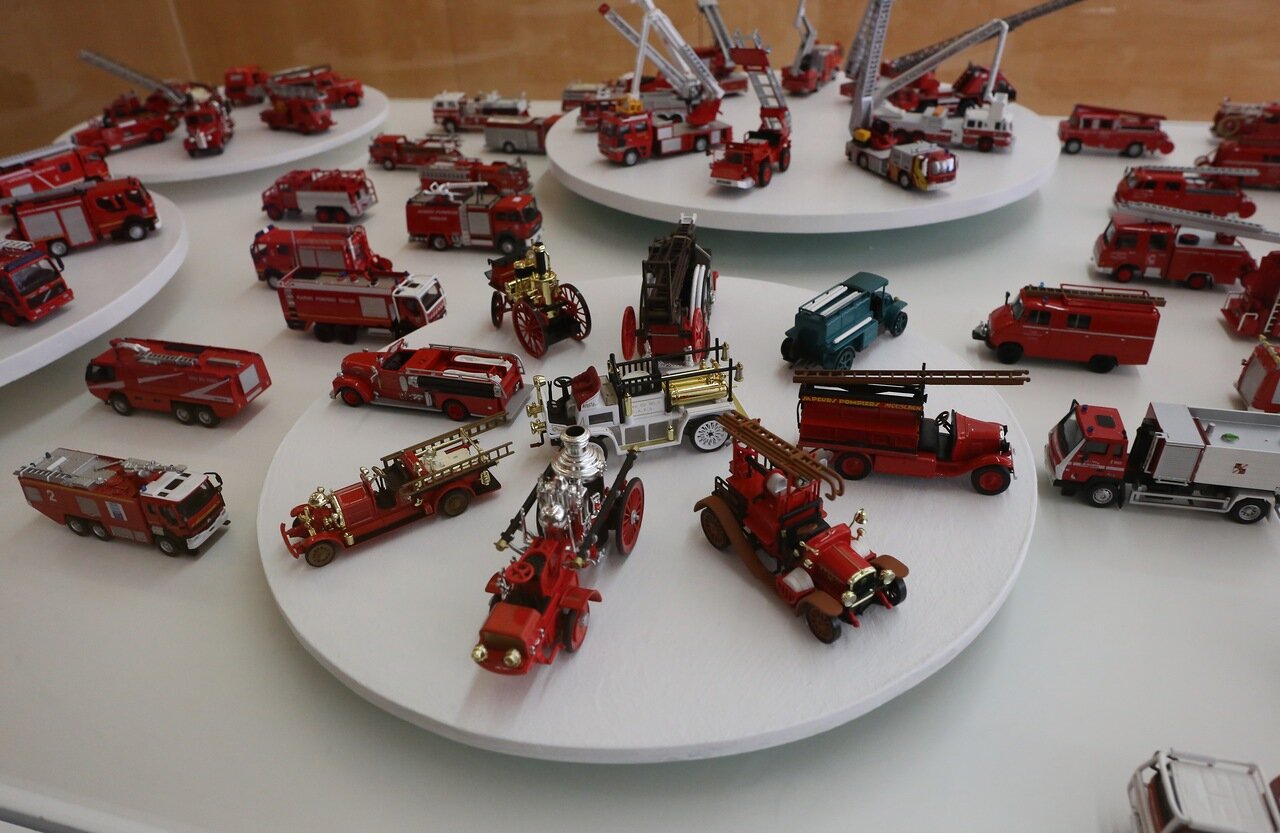Zaragoza Museum of firefighting (Museo del Fuego y de los Bomberos)
On the Plaza de La Victoria is one of the most interesting museums in Zaragoza-the Museum of fire and firefighting (Museo del Fuego y de los Bomberos). It occupies the former building of the Convento de la Victoria of the order of San Francisco de Paula. The monastery was founded in January 1576, the construction was carried out during the late sixteenth and early seventeenth centuries under the supervision of the architect Clemente Ruiz (Clemente Ruiz). The monks occupied the building until 1836, when, as a result of secularization, the building was confiscated for state needs and the artillery Park barracks were located there. The service in the monastery Church was conducted until 1862, then the temple was closed, and the altar can now be seen in one of the chapels of the Church of San Pablo. After that, the Church was rebuilt according to the project of municipal architect Segundo Diaz and turned into a fire station, which until 1983 was the city's center for fire control. With the opening of the modern fire Park on the Valle de Borto, most services moved there, and a small fire station remained on the territory of the former monastery. In 1989, the municipality decided to create a Museum of firefighting in an empty building. The building received a new facade designed by Ricardo Magdalena. In parallel, the collection of exhibits began and for 10 years, a unique collection of equipment, equipment and other items related to the work of firefighters was collected. The Museum was officially opened on the eve of the international exhibition EXPO-2008.
![]() The Museum is located at Calle de Ramón y Cajal, 32 (on the map) and is open in summer (from may 1 to October 31) from 10 to 19 hours, in summer until 17. On Sundays and holidays up to 14. Weekends are on Mondays.The cost of visiting is 3.20 euros. On
March 8, the birthday of Saint Juan de Dios (Saint John of God), the
patron Saint of firefighters, admission to the Museum is free, as well
as on January 29 (San Valerio), April 23 (San Jorge) and October 12
(virgin Pilar's Day). Also free entry to the international Museum day, may 18.
The Museum is located at Calle de Ramón y Cajal, 32 (on the map) and is open in summer (from may 1 to October 31) from 10 to 19 hours, in summer until 17. On Sundays and holidays up to 14. Weekends are on Mondays.The cost of visiting is 3.20 euros. On
March 8, the birthday of Saint Juan de Dios (Saint John of God), the
patron Saint of firefighters, admission to the Museum is free, as well
as on January 29 (San Valerio), April 23 (San Jorge) and October 12
(virgin Pilar's Day). Also free entry to the international Museum day, may 18.

In the lobby of the Museum there is a huge collection of scale models of fire fighting equipment from various eras.

Here you can see models of fire trucks of various purposes-from small high-speed cars for the rescue services of motor racing tracks, to airfield fire trucks.

Отдельный стенд посвящен механическим лестницам и подъемникам.

Так же в холле есть несколько макетов, иллюстрирующих действия пожарных в различных ситуациях: от железнодорожной катастрофы

до тушения пожара на химическом производстве.

Пожарная повозка 19 века.

В конце холла находится зал, посвященный пожарному делу в античный период.

В шестидесятых годах до нашей эры появилась первая профессиональная пожарная команда, организатором которой стал богатый римлянин Крас (Craso). В качестве огнеборцев Крас использовал пленных галлов, которые не только тушили пожары, но и совершенствовали свои навыки в постоянных тренировках. Средств на содержания команды предприимчивый римлянин добывал оригинальным образом - сначала выкупал за символическую плату горящий дом, а иногода и соседние, и лишь потом его люди приступали к тушению. После этого дома восстанавливались и продавались, часто их же бывшим хозяевам. В 21 году до Рождества Христова император Август организовал отряд для борьбы с пожарами из государственных рабов, а 6 году нашей эры была создана служба, куда принимались отпущенные рабы, стимулом к тяжелой и опасной работе была возможность получения римского гражданства. (подробнее о зарождении пожарного дела).

Первые технические средства были нехитрыми - ведра и веревочные лестницы.

Основные источники пожаров тех времен - светильники-лампадки, и основные орудия огнеборцев: топорики и покрывала, которые для огнестойкости пропитывались уксусом. В том или ином виде эти средства используются и современными пожарными.

Description of a water pump-the Heron of Alexandria pump. The invention of the Greek scientist was made in the period from 250 to 150 BC.

And the current model that explains how it works.
